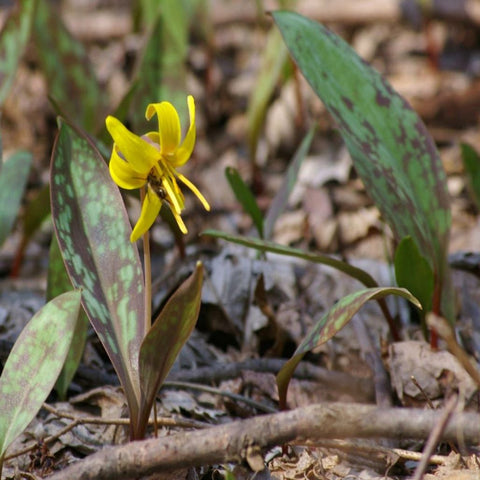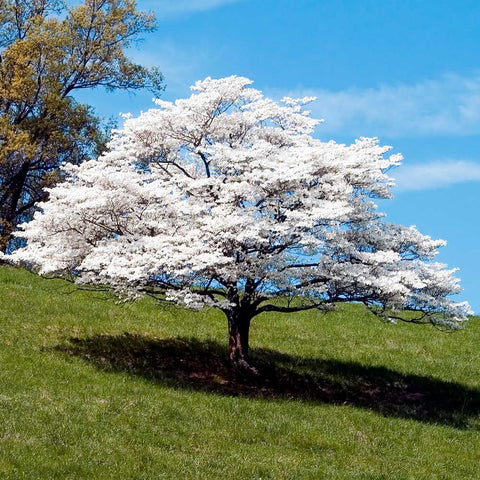When I first started gardening, I was drawn to the flashy plants I saw in garden centers—the ones with bold labels promising nonstop blooms or exotic colors. But after a few years of watering, fertilizing, spraying, and still losing more plants than I cared to admit, I stumbled onto something unexpected: native plants. At first, I thought of them as “wild” or too plain for my yard. But the moment I gave them a chance, everything changed—not just for my garden, but for me as a gardener.
The surprising benefit of native plants is how much easier they make your life while creating a garden that feels alive in ways I never expected. It’s not just about lower maintenance (though that’s a huge perk). It’s about the way they invite butterflies, hummingbirds, and bees right to your doorstep, the way they thrive through tough weather without babying, and the way they connect you to the natural rhythm of your local landscape.
Compare that to the imported plants I used to buy, which needed constant fussing and still struggled. With natives, I noticed I was spending more time enjoying my garden and less time nursing along fussy flowers that weren’t suited for my yard.
The Garden Started Taking Care of Itself
What surprised me most was how quickly my little experiment began to change the balance in my yard. The milkweed I planted brought in monarch butterflies, not just the adults but the caterpillars too. Coneflowers and blazing stars drew in clouds of bees. Goldfinches started visiting for the seeds. Suddenly, my garden wasn’t just for me—it was a tiny habitat.
And with that shift came something else: fewer pests. The more wildlife showed up, the more they kept everything in check. Birds and beneficial insects began doing the work I used to rely on sprays for. It felt like the garden was finally working the way it was meant to.
Native Plants are Less Water, More Resilience
One of the hardest summers I can remember, the heat baked everything. My lawn turned brown, and a lot of my ornamental plants shriveled up, no matter how much I watered. The natives? They hung on. Deep-rooted plants like black-eyed Susans and little bluestem grass seemed unbothered. I realized I wasn’t dragging hoses around nearly as much, and when the water bill came, I noticed the difference.
That resilience carries through the seasons. Natives know how to handle droughts, freezes, and the quirks of local weather. Instead of losing plants year after year, I finally had a garden that could handle whatever nature threw at it.
The Joy Factor
Here’s something I didn’t expect: how much more joy I’d get from my yard. When I planted mostly non-natives, my garden took so much work. With natives, there’s movement all over the place—bees buzzing, butterflies floating, birds hopping from branch to branch. Even the seed heads left standing in winter become a food source for wildlife and add texture against the snow.
There’s something deeply satisfying about knowing your garden isn’t just pretty, it’s part of the bigger picture. You feel connected in a way that’s hard to describe until you experience it. Gardening shifts from being a chore to being a partnership with nature.
Saving Money Without Trying
Saving money is one other unexpected perk? I used to spend a lot of money on fertilizer, pesticides and replacement plants when the fragile ones didn’t make it. Native plants don’t require that kind of coddling. After they are established, they ask very little of us. Some will self-seed or spread on their own and I didn’t have to buy more plants to fill in. Gradually, my gardening budget went a lot further, and my garden got fuller.
Changing How People See “Wild”
Friends and neighbors who visit often start by asking what I did to attract so many butterflies and birds. When I tell them it’s mostly native plants, they’re surprised—they picture them as weeds or too messy. But with a little planning, natives can look just as polished as any traditional garden. A drift of coneflowers, a cluster of columbine, or the fiery fall leaves of native shrubs can rival anything from the garden center. The best part? They look good and do good at the same time.
A Native Garden That Gives Back
What began as an experiment to see if I could grow plants that didn’t need so much babying turned into something much bigger. Native plants taught me that gardening doesn’t have to be about controlling nature—it can be about working with it. My yard isn’t just a collection of plants anymore; it’s a place where life thrives, from the tiniest bee to the migrating monarchs passing through.
That’s the surprising benefit of native plants: they give back more than you ever expect. They give back to the soil, to pollinators, to your wallet, and to your peace of mind. Most of all, they remind you that your little patch of earth is part of a much larger story—and you get to play a role in keeping that story alive.




